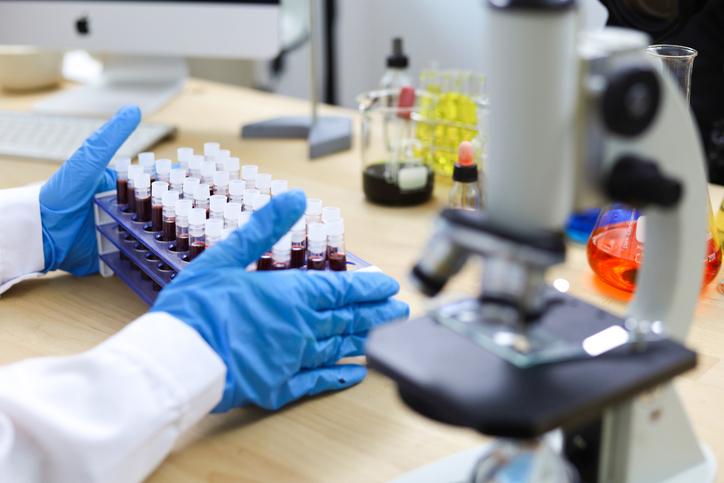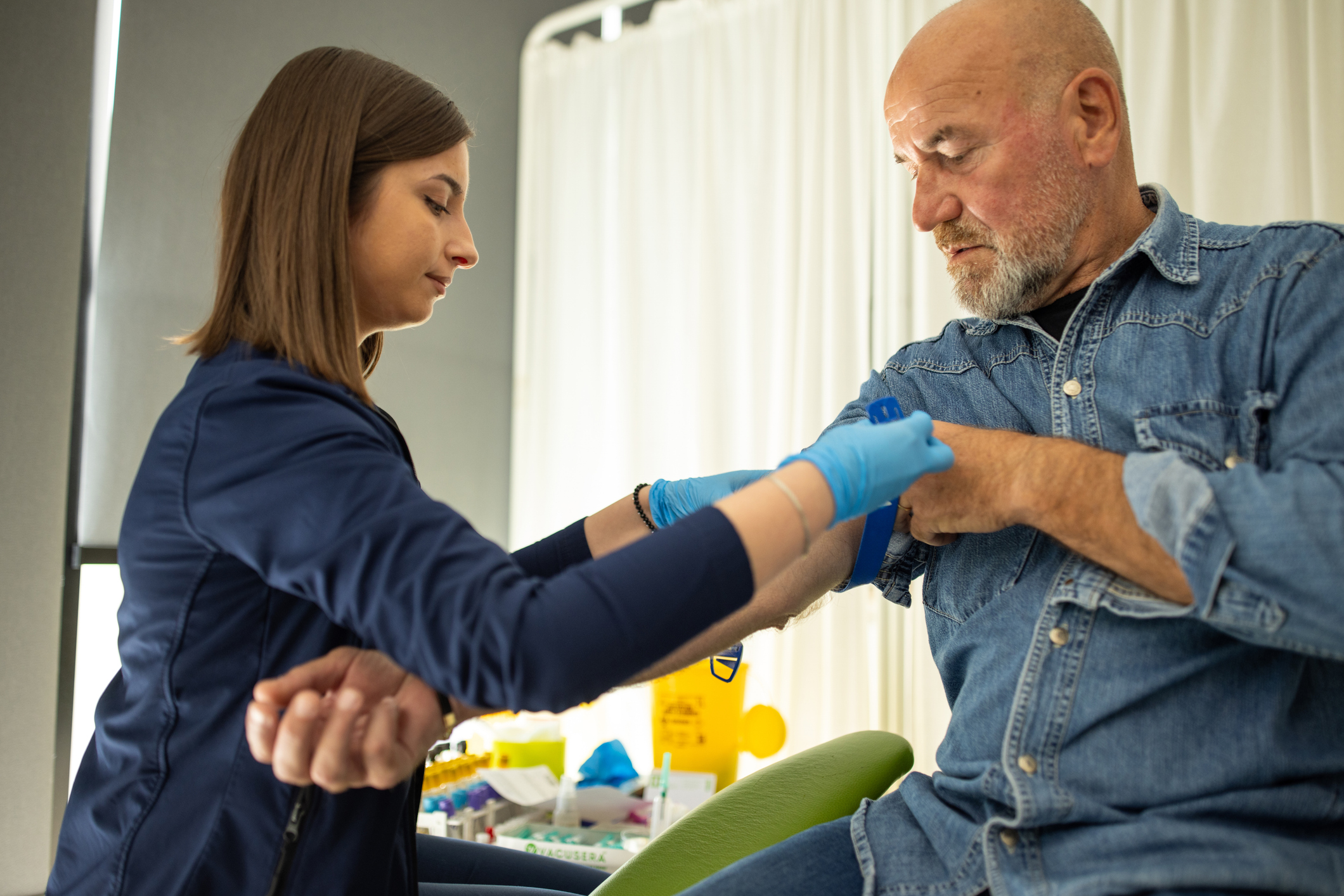Leucemia
Leukemia is a cancer of the early blood-forming tissues, such as bone marrow and the lymphatic system.
Síntomas
Leukemia typically affects white blood cells that help your body fight infections. Several types of leukemia are classified by how quickly they progress. For instance, acute forms develop rapidly, while chronic forms progress slowly. Certain types of leukemia may be more common among different age groups.
Symptoms or signs of leukemia may vary. If you notice these symptoms, talk to your health care provider:
- Fiebre o escalofríos
- Persistent fatigue and/or weakness
- Infecciones frecuentes o severas
- Pérdida de peso involuntaria
- Nódulos linfáticos hinchados, agrandamiento del hígado o del bazo
- Hemorragia o hematomas de fácil formación
- Hemorragias nasales recurrentes
- Pequeñas manchas rojas en la piel (petequias)
- Sudoración excesiva, especialmente por la noche
- Dolor o sensibilidad en los huesos
Risk Factors
Several risk factors that might increase a person’s chance of developing leukemia include:
- Cigarette smoking and other types of combustible tobacco products such as cigars or pipes
- Radiation exposure
- Certain chemical exposures, e.g., benzene, formaldehyde
- Certain genetic factors
- Family history of leukemia
Prevención
To lower your risk of leukemia, consider these lifestyle changes:
- Don’t smoke or if you do, quit
- Avoid coming into contact with harmful chemicals
- Maintain a healthy weight through a diet rich in vegetables, fruits, and whole grains
- Be physically active
Screening
Although there is no routine screening test for leukemia, it’s important to talk to your doctor if you have symptoms or signs of the disease. Leukemia may be detected through certain lab tests or imaging.
- Leukemia is typically diagnosed by examining the results from a complete blood count (CBC) that measures red blood cells, white blood cells, and platelets.
- If suspected, your health care provider might perform a physical exam, or order a chest X-ray to look for swollen lymph nodes and other signs of infection.
- Further testing that can be done to look for the presence of leukemia cells in samples from a spinal tap or bone marrow biopsy.
Learn More About Leukemia
 In Florida, an estimated 14 individuals out of 100,000 are diagnosed with leukemia every year.
In Florida, an estimated 14 individuals out of 100,000 are diagnosed with leukemia every year.
Linfoma
El linfoma se refiere a los cánceres que comienzan en el sistema linfático (los tejidos y órganos que producen, almacenan y transportan glóbulos blancos que combaten infecciones). Los dos principales tipos de linfoma son:
- Hodgkin lymphoma: spreads orderly from one group of lymph nodes to another.
- Non-Hodgkin lymphoma: spreads sporadically through the lymphatic system in a non-orderly way.
Síntomas
Both Hodgkin lymphoma and non-Hodgkin lymphoma typically present with symptoms that include swollen lymph nodes, especially in the area of the body where the lymphoma starts to grow. Talk with your health care provider if you have any of these symptoms:
- Nódulos linfáticos hinchados
- Fiebre
- Sudores nocturnos
- Tiredness
- Unexplained weight loss
Risk Factors
Ciertas poblaciones tienen un mayor riesgo de desarrollar linfoma, específicamente:
- Los adolescentes, los adultos jóvenes (de 15 a 39 años) y los adultos mayores (de 75 años y más) está en riesgo de desarrollar linfoma de Hodgkin.
- Los hombres tienen más probabilidades que las mujeres de desarrollar linfoma.
- Las personas de raza blanca tienen más probabilidades de desarrollar linfoma no Hodgkin.
Several risk factors that might increase a person’s chance of developing lymphoma include:
- Having a family history of lymphoma
- Having an autoimmune disease
- Being HIV positive
Prevención
To lower your risk of lymphoma, consider these lifestyle changes:
- Maintain a healthy weight through a diet rich in vegetables, fruits, and whole grains
- Be physically active
- Don’t smoke or if you do, quit
- Avoid activities that increase the chance of getting HIV/AIDS and hepatitis C infections
- Avoid unnecessary exposure to radiation
Screening
Early detection is possible for both Hodgkin and non-Hodgkin lymphoma. Several tests may be done during the diagnostic process to determine lymphoma staging.
- To diagnose lymphoma, health care providers typically start with a physical exam to look for signs of swollen lymph nodes.
- Additional testing can be ordered to detect the presence of lymphoma cells through a biopsy or blood test.
- Advanced imaging such as CT or MRI scans can show how advanced the cancer is and how well it is responding to treatment.
Learn More About Lymphoma
 In Florida, an estimated 18 individuals out of 100,000 are diagnosed with non-Hodgkin lymphoma cancer every year.
In Florida, an estimated 18 individuals out of 100,000 are diagnosed with non-Hodgkin lymphoma cancer every year.
Multiple Myeloma
Multiple myeloma is a cancer of the plasma cells, which are a type of white blood cell found in bone marrow. It produces abnormal plasma cells and accumulates in the bone marrow, interfering with the production of healthy blood cells.
Síntomas
While symptoms of multiple myeloma can vary and may not be noticeable in the early stages, common symptoms include:
- Bone pain, especially in the spine, chest, or hips
- Nausea and loss of appetite
- Fatigue and weakness
- Frequent infections
- Pérdida de peso
- Excessive thirst and frequent urination
- Kidney problems
- Numbness or weakness in the legs
Risk Factors
- Multiple myeloma is more common in men than women
- Having a family history of multiple myeloma
- Having a plasma cell disease, such as monoclonal gammopathy of undetermined significance (MGUS) or solitary plasmacytoma
- Exposure to chemicals, especially for those who work in industries that interact with pesticides and fertilizers, petrochemicals, and wood dust or fuel oil products
Prevención
To lower your risk of multiple myeloma, consider these lifestyle changes:
- Avoid coming into contact with harmful chemicals
- Maintain a healthy weight through a diet rich in vegetables, fruits, and whole grains
- Be physically active
- Don’t smoke or if you do, quit
Screening
Multiple myeloma screening is not routinely performed, mainly because it is rare. However, if suspected, certain tests can be done.
- Blood tests can detect high amounts of protein in the blood, often the monoclonal protein (M-protein), which is a key indicator of multiple myeloma.
- Routine urine samples can detect the presence of myeloma protein (also known as Bence-Jones protein).
- If you have a family history of multiple myeloma, your provider might suggest X-ray imaging or a bone marrow biopsy to look for bone abnormalities linked to the disease.
Learn More About Multiple Myeloma
 An estimated 7 individuals out of 100,000 are diagnosed with multiple myeloma each year.
An estimated 7 individuals out of 100,000 are diagnosed with multiple myeloma each year.